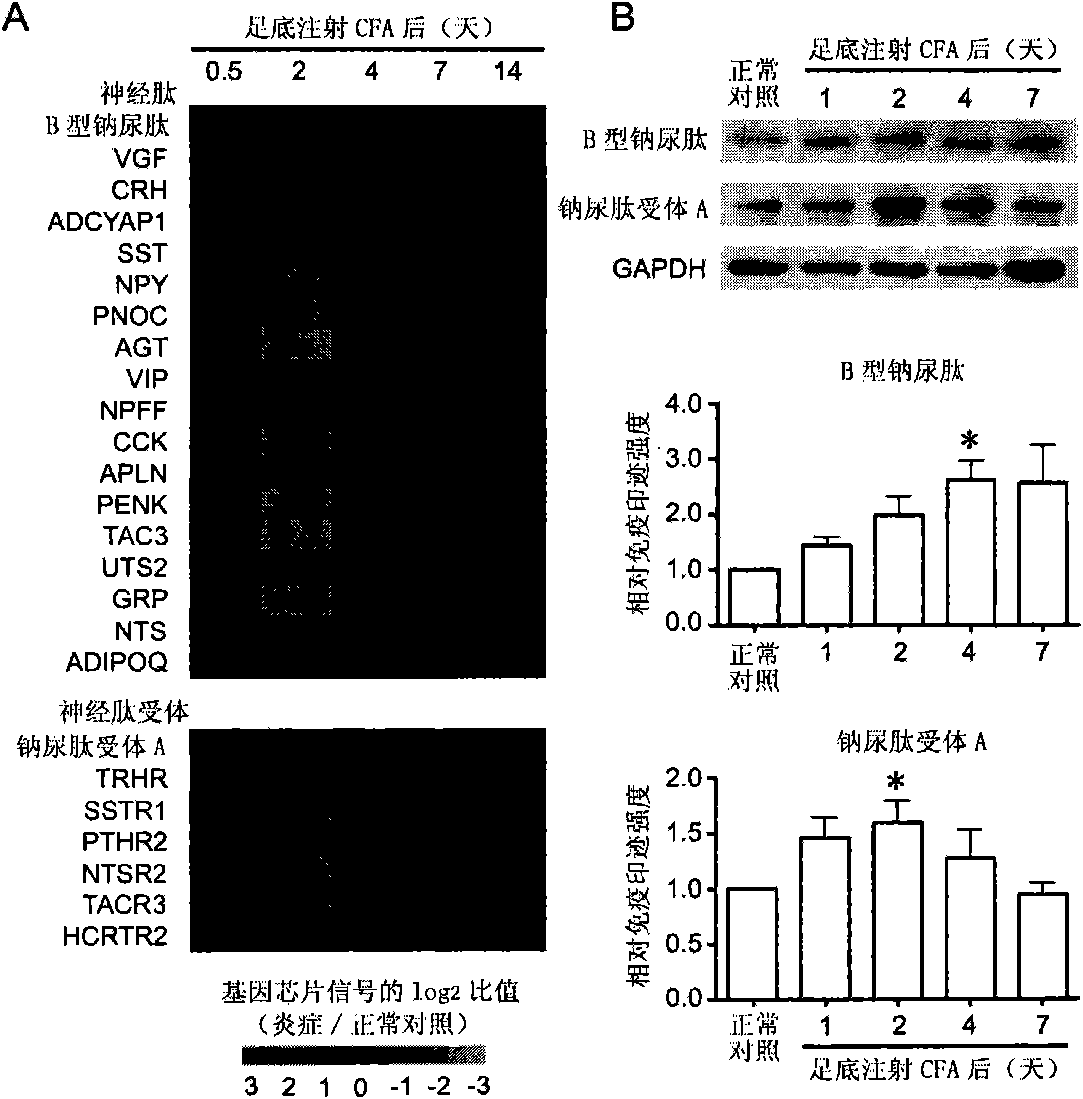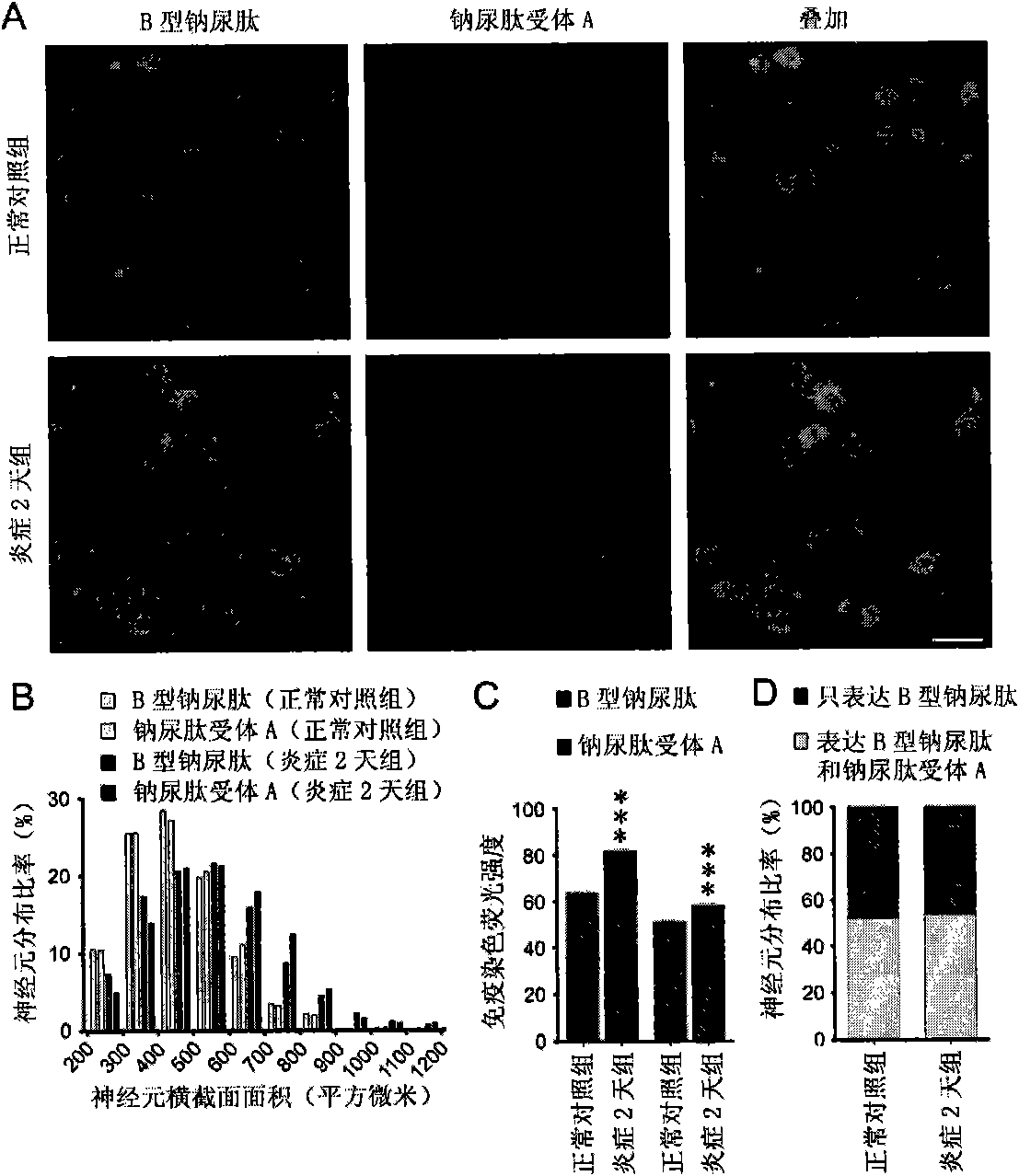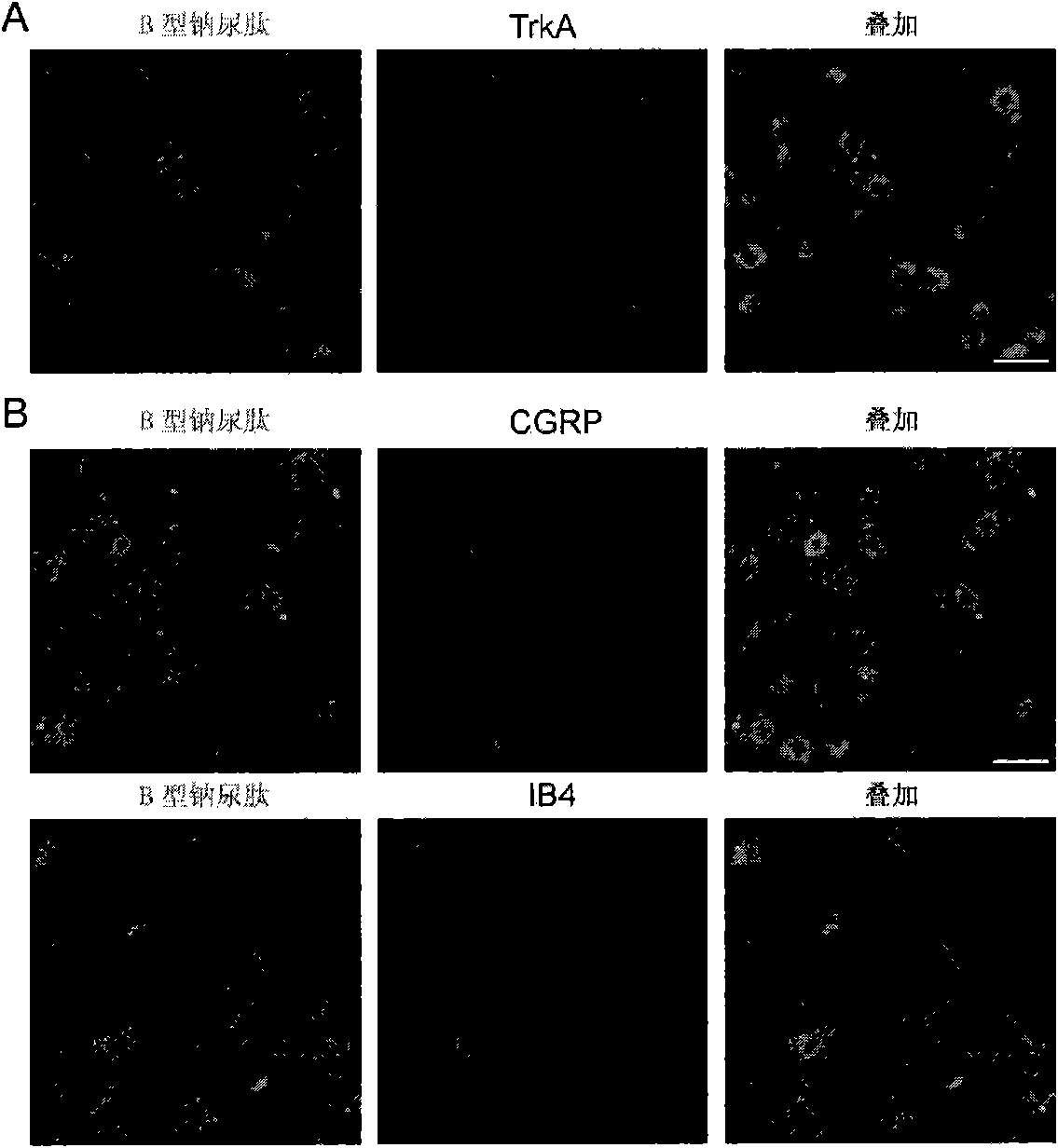Purpose of agonist of natriuretic peptide receptor A in pain management
A technology of receptor agonists and natriuretic peptides, which is applied in the fields of biotechnology and medicine, can solve the problems of unclear whether there is a relationship between pain, non-natriuretic peptides and their receptor expression and function research, etc.
- Summary
- Abstract
- Description
- Claims
- Application Information
AI Technical Summary
Problems solved by technology
Method used
Image
Examples
Embodiment 1
[0163] Example 1. B-type natriuretic peptide and natriuretic peptide receptor A are expressed in dorsal root ganglia and expression increases after inflammation
[0164] Total RNA of L4 and L5 dorsal root ganglia of normal rats and rats 0.5, 2, 4, 7 and 14 days after CFA injection was used for Agilent 22k rat oligo gene chip analysis. Gene expression data were filtered and statistically analyzed.
[0165] Of the 20,500 gene probes tested, a total of 1257 gene probes (6.1% of the total probes) were identified as having significant expression changes, i.e., at least one of the five time points tested The detected gene expression was up-regulated or down-regulated by more than 2 times compared with normal tissue. Further unigene analysis identified 1123 genes represented by these probes (509 increased expression and 614 decreased expression), including 18 neuropeptides, 6 G protein-coupled receptors (G-protein-coupled receptors, GPCRs) and a natriuretic peptide receptor (Burbac...
Embodiment 2
[0170] Example 2. B-Type Natriuretic Peptide and Natriuretic Peptide Receptor A Expression in Dorsal Root Ganglion Microneurons and Increased Expression After Inflammation
[0171] The inventors further studied the cell distribution of B-type natriuretic peptide and natriuretic peptide receptor A in the dorsal root ganglion of rats by using immunohistochemistry.
[0172] The results showed that: B-type natriuretic peptide and natriuretic peptide receptor A are mainly distributed in the small neurons of the dorsal root ganglion (cross-sectional area figure 2 A and 2B). 50% of dorsal root ganglion neurons were immunopositive for B-type natriuretic peptide; 26% of dorsal root ganglion neurons were positive for natriuretic peptide receptor A ( figure 2 A). On day 2 of plantar injection of CFA, the intensity of B-type natriuretic peptide and natriuretic peptide receptor A immunofluorescence intensity of dorsal root ganglion neurons increased ( figure 2 A-C), while the number o...
Embodiment 3
[0176] Example 3. B-type natriuretic peptide reduces neuronal excitability in the presence of glutamate
[0177] The inventors further investigated whether B-type natriuretic peptide can regulate the electrical activity of small neurons in the dorsal root ganglion.
[0178] Previous studies have shown that activated natriuretic peptide receptor A induces the synthesis of cGMP and activates the downstream PKG so that the potassium channel BK Ca Phosphorylated, increasing the opening capacity of these channels, resulting in hyperpolarization of vascular smooth muscle cells and glomerular mesangial cells (Williams et al., 1988, Proc Natl Acad Sci USA85: 9360-9364; Sansom and Stockand, 1996, Clin Exp Pharmacol Physiol 23:76-82; Tanaka et al., 1998, Naunyn Schmiedebergs Arch Pharmacol 357:705-708). Importantly, applying the potassium channel BK Ca The channel opener NS1619 has been reported to reduce dorsal root ganglion small neuron firing frequency (Zhang et al., 2003, Neurosci...
PUM
 Login to View More
Login to View More Abstract
Description
Claims
Application Information
 Login to View More
Login to View More - R&D
- Intellectual Property
- Life Sciences
- Materials
- Tech Scout
- Unparalleled Data Quality
- Higher Quality Content
- 60% Fewer Hallucinations
Browse by: Latest US Patents, China's latest patents, Technical Efficacy Thesaurus, Application Domain, Technology Topic, Popular Technical Reports.
© 2025 PatSnap. All rights reserved.Legal|Privacy policy|Modern Slavery Act Transparency Statement|Sitemap|About US| Contact US: help@patsnap.com



